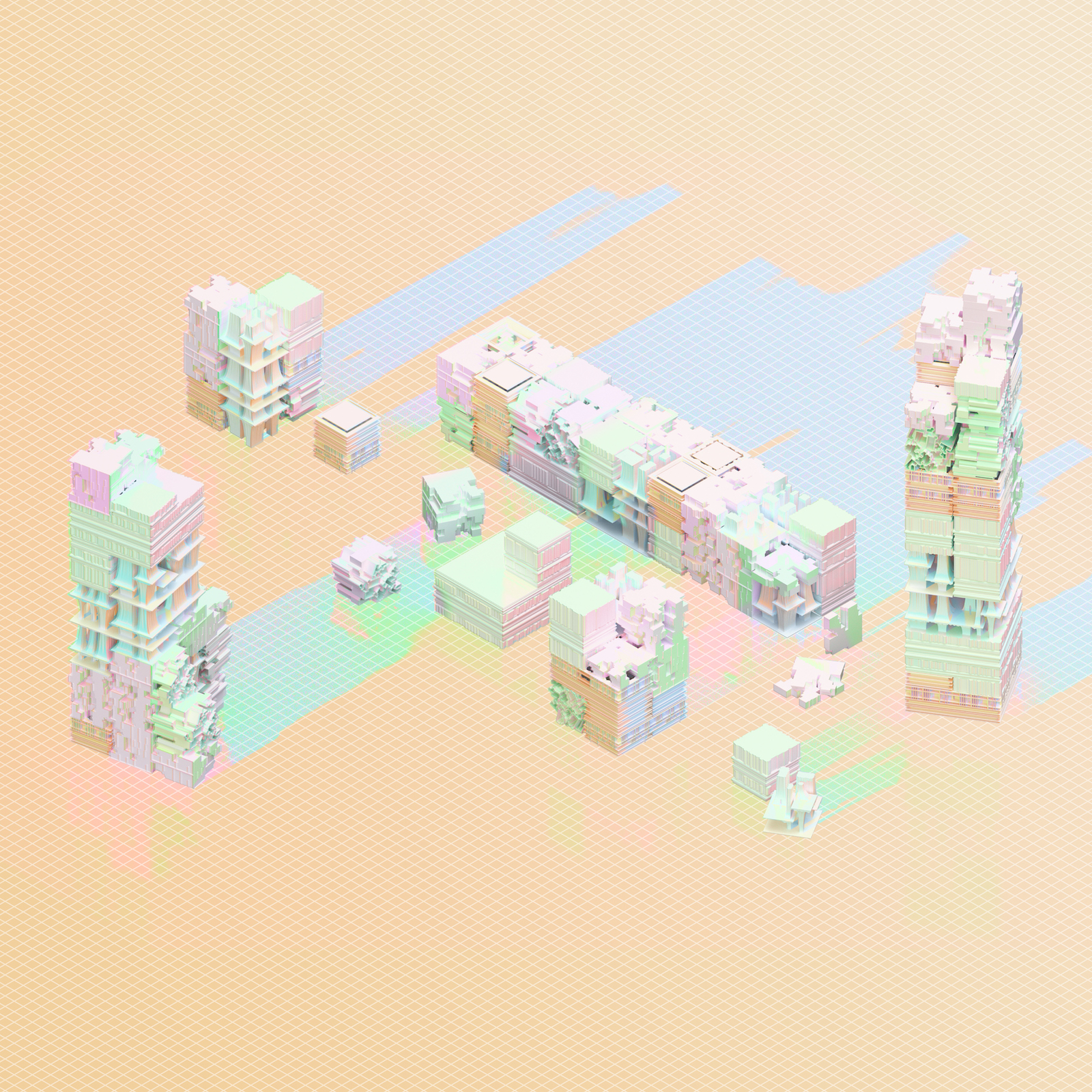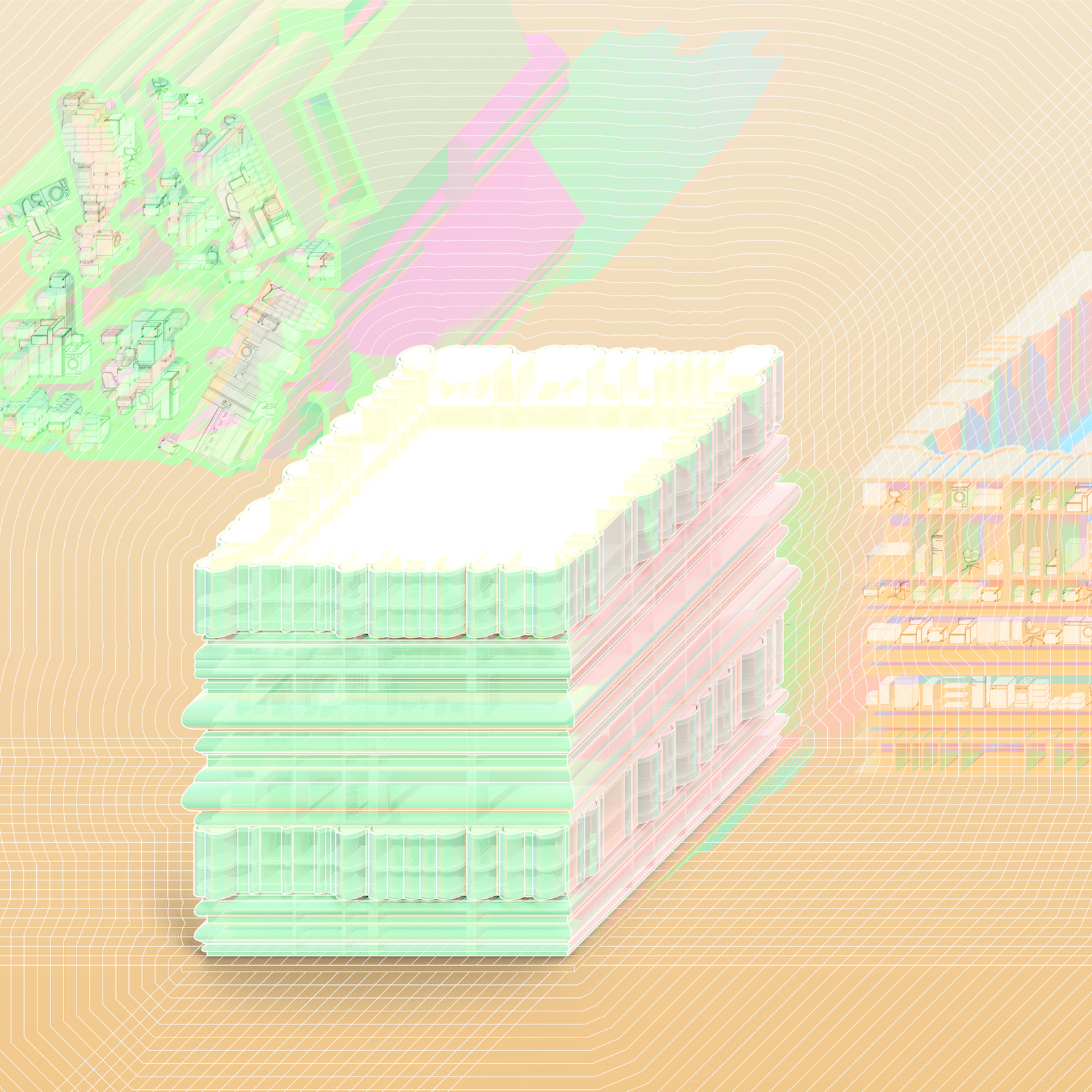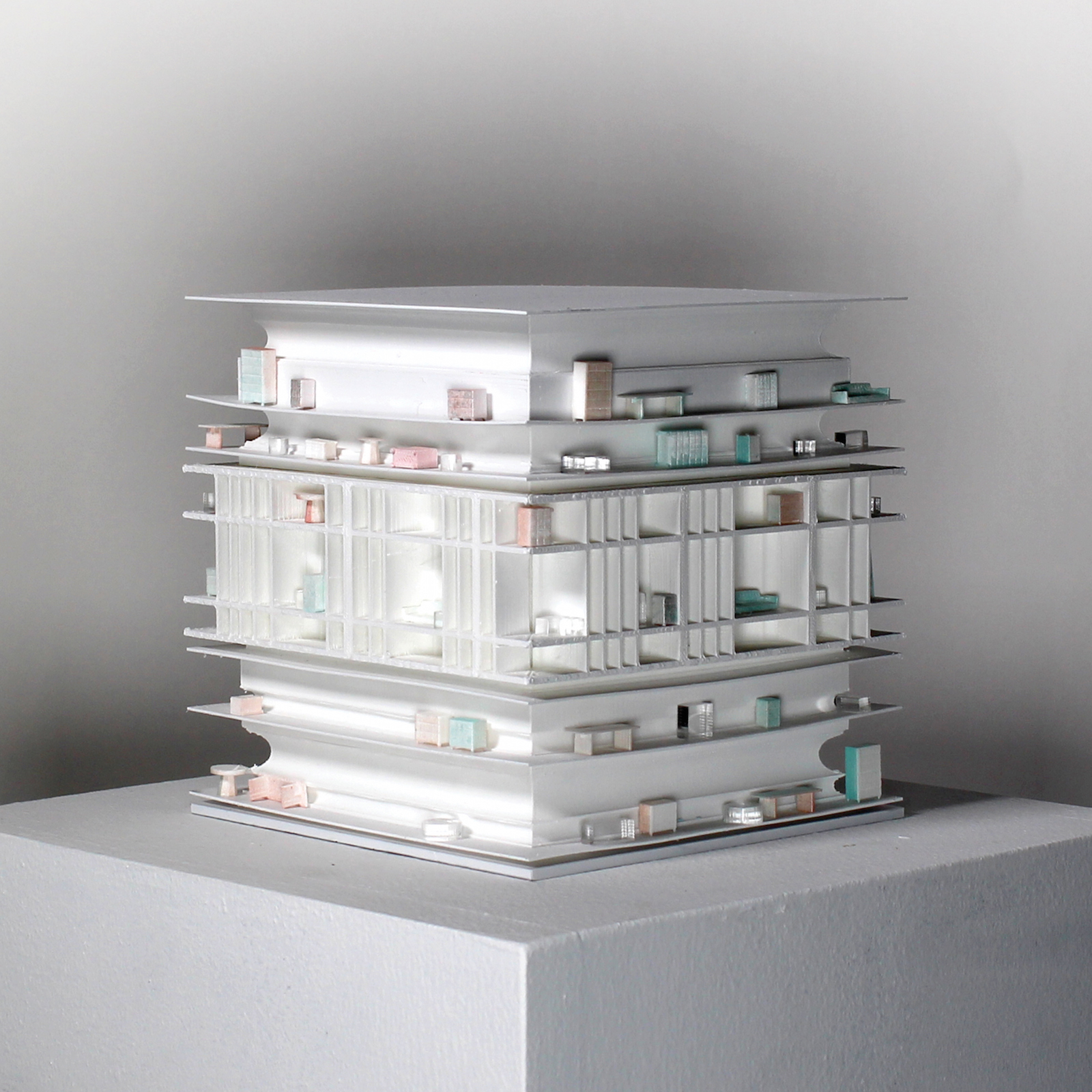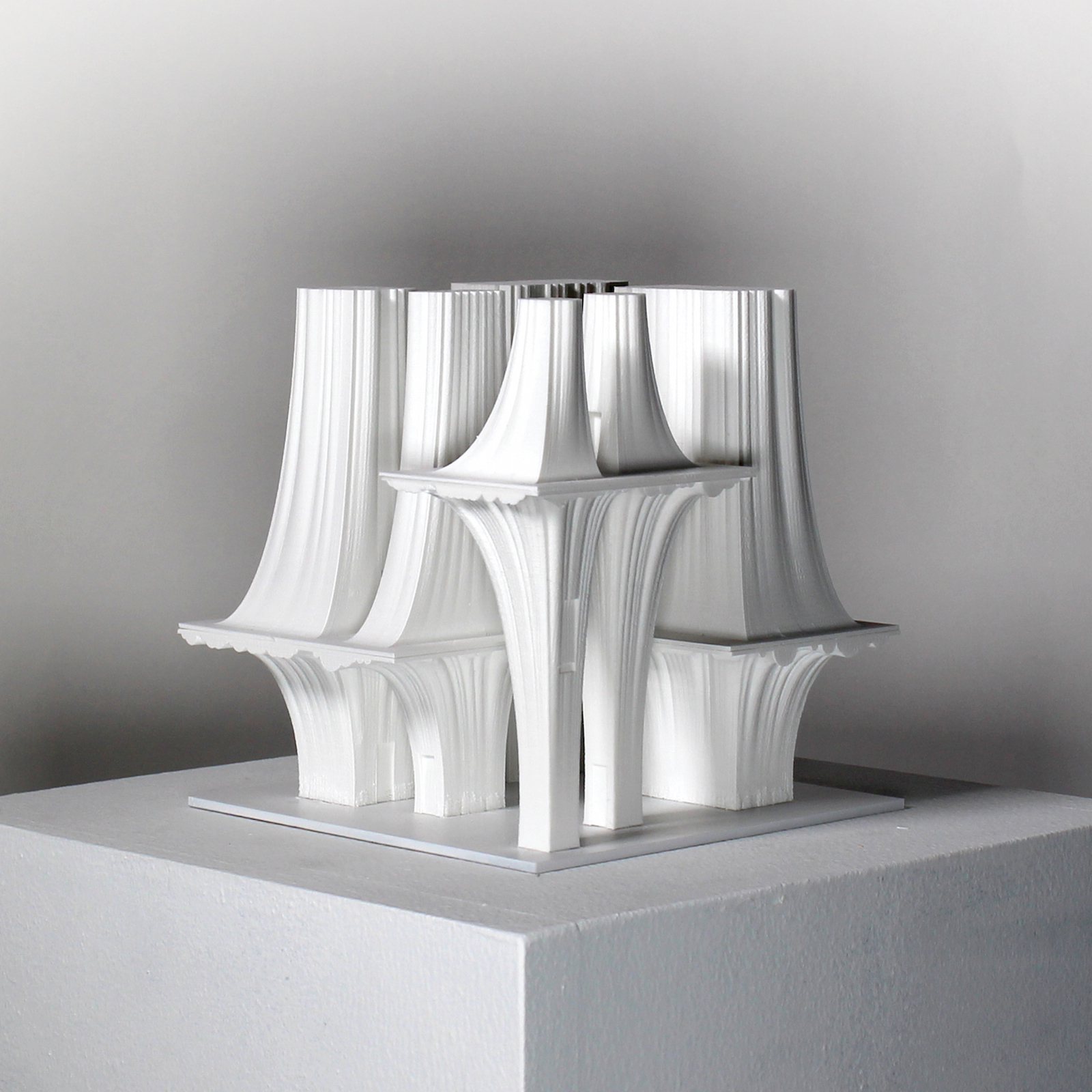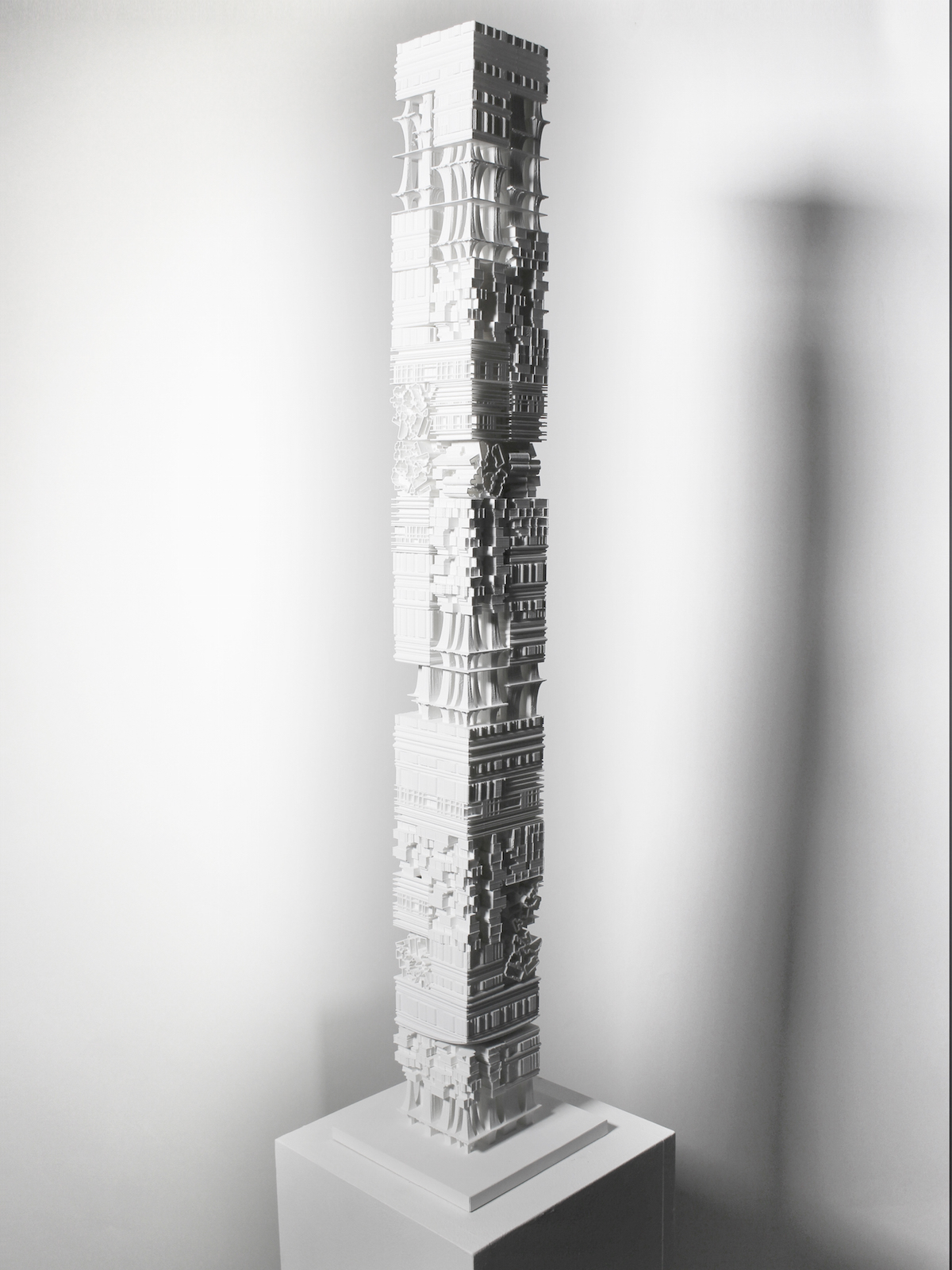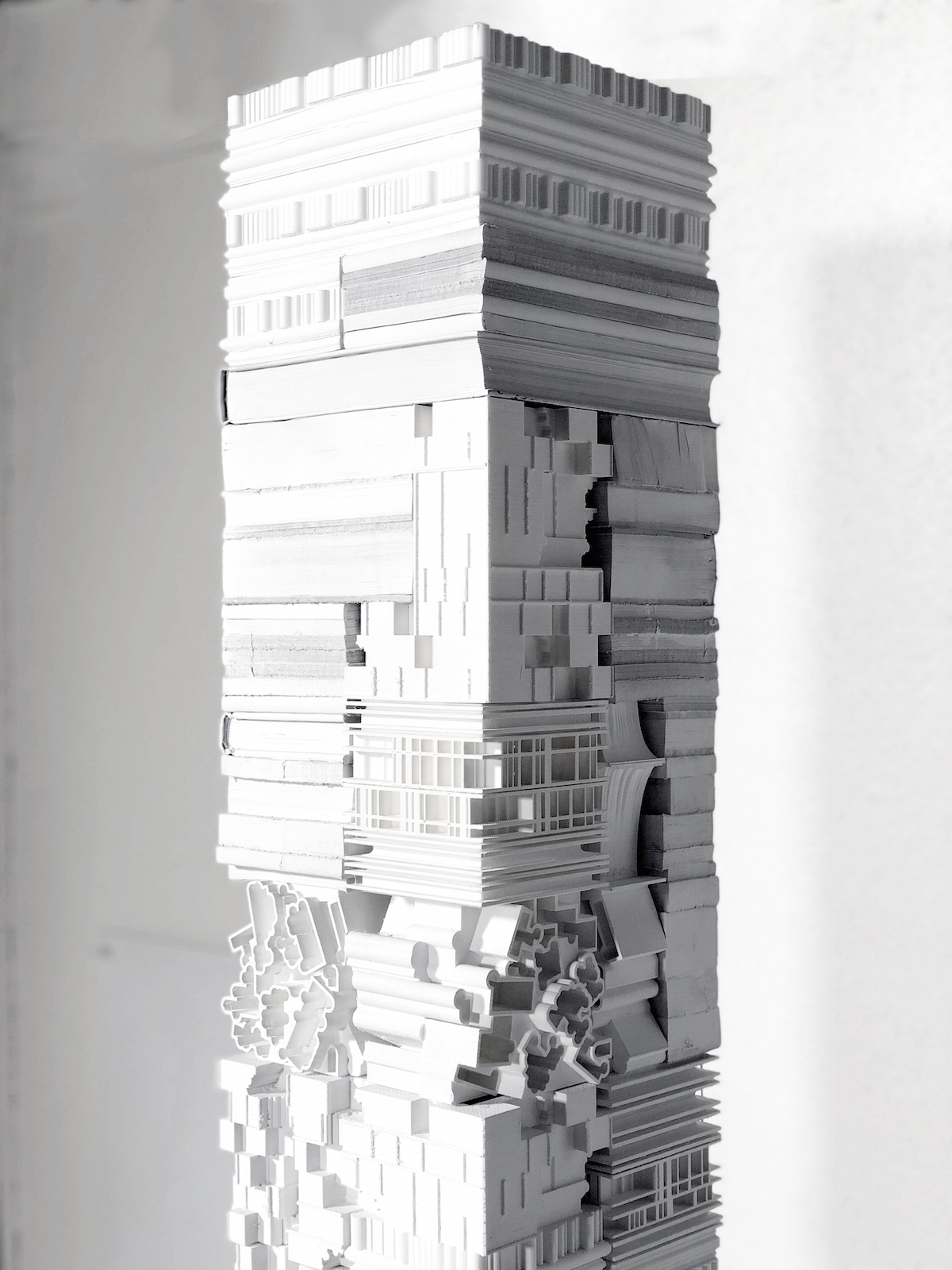Death, Divorce, Down-sizing, Dislocation, and (Now) Display: A Self-Storage Center for a More Exhibitionist Future
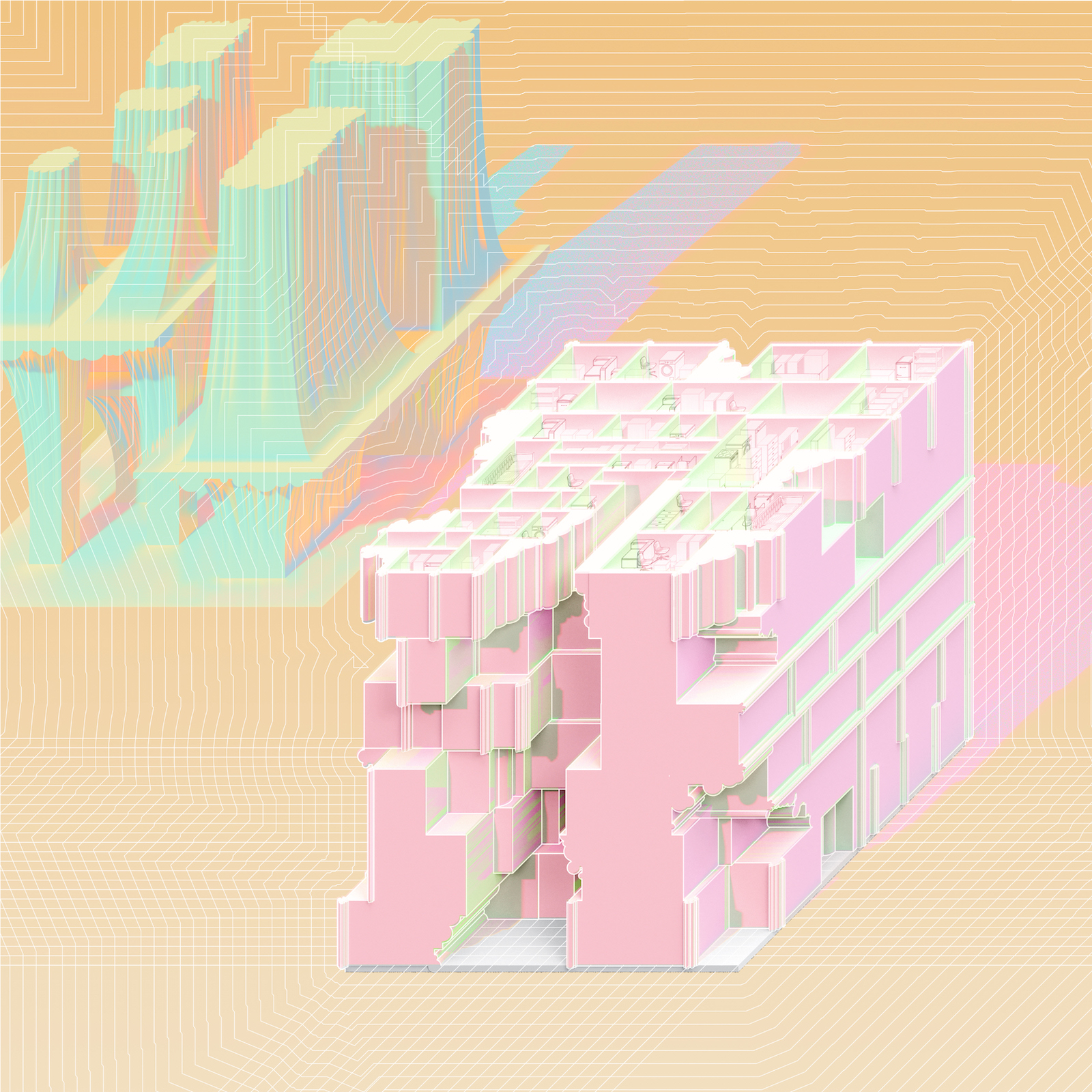
By Hyojin Kwon (MArch ’18), winner of the 2018 James Templeton Kelley Prize. Kwon’s thesis project received an Irving Innovation Fellowship for the 2018-2019 academic year.
Storage today finds itself compartmentalized into two categories: the visible and the invisible. As materialistic culture encourages self-identification with objects, visible storage through the shelf accommodates both easy access and curation of self-expression. However, in response to excess due to overconsumption, self-storage centers—one of the fastest growing industries in the United States—provide users with an invisible alternative to hide away a multitude of belongings. However, this image of the tightly packed storage room is not a new phenomenon. Sixteenth-century cabinets of curiosities contained enormous quantities of possessions that were curated and exhibited as archives of knowledge. This thesis asks: can cabinets of curiosities trigger a new typology of architecture for the contemporary self-storage center? Can such an establishment blur the distinctions between storage space, personal collection, and cultural museum?
The self-storage center for a near future presents collectors with many options for storage and display, both physical and digital, accommodating a wide range of storage formats under one roof. Public exhibition of personal possessions achieves an institutional character for the self-storage center, in which objects gain an architectural importance. Constant curation of objects resists hoarder culture, instead asking what belongs in storage when the previously dark and hidden becomes bright and showcased. As the new self-storage center takes on museological presentation and develops a distinct form, it acts as a monument to collections of the tangible and intangible within its urban context. However, this specific architecture does not subordinate its contents; rather, it provides a framework into which objects, people, and memories breathe life.
Kwon has extended work on this project into the 2018-2019 academic year, with support from the Irving Innovation Fellowship.
The research I have conducted with the support of the Irving Innovation Fellowship is, in a way, a continuation of my graduate thesis but with a few key modifications. While my thesis project was more of a speculative proposal envisioning a new architectural typology, my current fellowship research is an investigation of the typological forms needed to realize these alternative storage systems. In the typology I have developed, future self-storage centers would provide users with different storage types that accommodate a range of storage needs, types of access, and object display options. Each of the proposed storage formats responds to a different existing problem observed in contemporary self-storage centers. From this, I have aimed to develop a formal design process optimized for each storage system type. In my proposed storage format, the objects which people normal store out of site now gain an architectural importance, since their possessions are put on display as if in a museum. This provides a framework wherein objects, people, and memories are all on display, breathing life into what are otherwise the dark and hidden spaces of private storage.
In order to carry out my project, I have utilized the latest technologies that enable reciprocal 3-dimensional formal information exchange between the physical objects to be stored and digital modeling environments that allow me to experiment and test a variety of display solutions. This is primarily achieved through the use of 3d scanning techniques that digitize the real objects to be stored, and then implements versatile 3d-printing techniques to explore strategies for the fabrication, materiality, and further representation of my proposed typology. In order to further develop the unique architectural forms needed for this new form of self-storage center, the physical behavior of the objects is simulated through digital operations that include piling, stacking, draping, and packing, each of which is driven by software-based physics engines, thus allowing me to simulate these real-life scenarios. This consistent feedback between the operations of digitalization, simulation, and materialization processes will ultimately culminate in the development of prototypical architectural objects. My hope is that this research will result in a fabrication approach that can be scaled for implementation within architectural practice itself.
